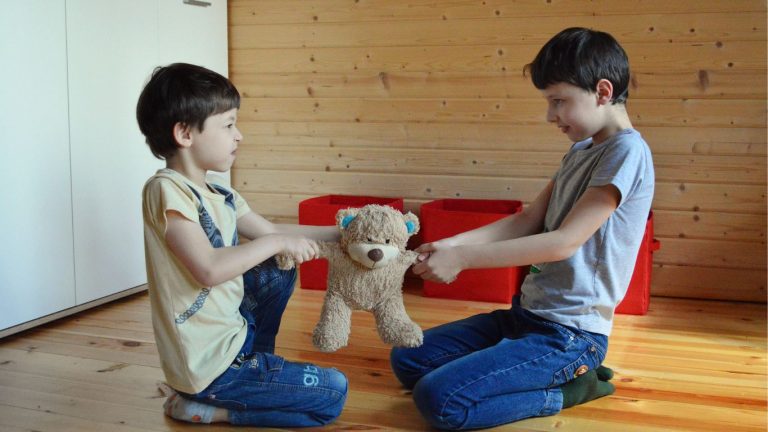Happy New Year! Once again the media abounds with articles about sun and safety. A recent one began: “Parents warned about sun’s danger.”
It began with a reminder that we cannot have too many times, “Parents must guard against their children getting sunburned if they want to protect them from melanoma in later life, the Health Sponsorship Council (HSC) says.” While I have no doubt about the accuracy of the prediction, I cannot help but think, “Great! One more for the list of parent guilt.”
Very sensibly, the article reminds us that “in New Zealand in summer the temperature can be perfect for staying out in the sun at the beach or pool all day…Parents needed to make sure children have shade, especially between 11am and 4pm.”
So in the midst of the outdoor summer holiday that I have been longing for all year, I am supposed to keep my children shaded – read “still and possibly indoors” – for five hours in the middle of the day.
In one swipe the grinch that stole Christmas had just stolen my summer holiday as well! What’s a parent to do?
I’m not bored
Wondering about how to keep our children occupied indoors or under shade for a substantial part of the day set me back to thinking about “the olden days” – pre-electronics – and how we children occupied ourselves.
If we said, “I’m bored” we got a dose of OT (Occupational Therapy) in the form of some household tasks that needed doing, so we rapidly learned not to utter the words. Just how did we fill in those long pre-electronic days? To tell the truth, we (those of us who are sixty plus or minus) mostly spent it outdoors, swimming largely unsupervised, without sunscreen, hatching skin cancers for our later years.
If the tide had gone out too far for swimming, we oiled ourselves with a salad dressing that would have made Paul Newman proud – oil with a touch of brown vinegar – and kept turning and basting until we were brown and crisp. No kidding!
So much for learning from the “good old days.”
Old fashioned stuff
This trip down memory lane has set me thinking about other things that I remember from the summer holidays. Making things and playing games. These are both great ways of keeping children occupied and increasing their skill base but there is a difference with this generation (of parents) and the generation two generations (it takes that long to be “granny”) away. Sadly, the difference involves a lot more work for you as parents than it did for my parents.
My parents played games with us because it was fun for them and they gave every appearance of wanting to be with the entire family. When it came to craft and game skills to keep ourselves occupied, some had already been taught to us by our parents and some we “just knew” or learned from each other.
If you want to develop “shade” skills for your children, it is going to take quite a bit of coaching and supporting – and some of them, you may have to teach yourselves before you teach your children.
Don’t blame me. Blame your parents. That’s what parents are – apparently – for!
Old-fashioned card games
One that I remember playing with three generations around a large dining room table was “Animal Snap.” Every player takes on an animal sound – being a goldfish requires extra-restraint at tense moments. If your card matches another’s, you need to call out the other’s sound. If you spy a “snap” that is not your own, you are obliged to call out both card-owner’s sounds if you want the pile of cards.
At this moment, you may well be feeling inhibited about thinking about doing this with the vision of a sneering thirteen-year-old snarling, “Lame.” Lame it may well be but a loss less lame that drinking till you fall over. Don’t be discouraged, play with whoever is available and let the sneerer listen to the sound of others having fun.
It is also a very good time to practise parental grace. That is the one where you restrain yourself from snarling “Well, don’t then” and instead, after ten minutes into an enjoyable game, you go over, put an arm around the sneerer and say warmly, “Whenever you want to, we’d love you to join our lame attempt at fun.”
There are lots of other fast and fun card games that you can rediscover or discover for the first time. At our bach we still have a set of Canasta cards. Every year we have to read the rules all over again, but once we have done our annual up-skill, it is amazing how we can promote fiendish cunning, mind trickery, ruthless revenge and cries of,”Mum! Why do you always pike out when you are losing.”
Old-fashioned board games
Most board games will give your child a chance to learn how to take turns, win graciously, lose without chucking the board in the air and negotiate playing through a list of games so that everyone gets a turn at their favourite.
If you are lucky enough to find a complete Chinese Chequers set in the back cupboard, you can teach your children planning, the meaning of “diagonal” and, if you care to play six colours at once, the original meaning of traffic snarl-ups.
“Monopoly” seems to have lost little of its attraction. Particularly when there are so many “real-estate” programmes on TV. Apart from teaching children about investment, rentals, jail and utilities, quantity versus quality, you can reacquaint them with banknotes, addition, subtraction and the pain of not being able to own more than you can afford. I am well aware that there is a new editions out that uses credit cards but, if you can find an edition so old that it uses the folding stuff and wooden buildings the odds are high you are in a family bach (or crib, if live in the South Island.)
Thinking long-term, you are preparing your eight-year-old for their eventual OE. (I well remember my first time in London thinking I had just teleported myself into some giant Monopoly game. I did keep hoping someone would give me two hundred pounds every time I passed go, but I never could find that particular Go sign.)
A really good game of Monopoly can last right through to the post-shade time of day or at least till the first adult bursts into tears.
Chess, draughts, fox and geese
With many of our children feeling electronically deprived (It’s not that the electronics are not highly transportable, it’s just that summer holidays are a golden opportunity to get over the addiction – or at least put it on “pause” for a while) chess, draughts, and Fox and Geese are all ways of “methadoning” your children with games that also require knowing how each piece moves, to plan ahead, to not only know what you are doing but to keep your eye on the ever-lurking danger of your opponent, to know when to leap out of the way.
The previously feminine crafts
As the school Term Four was drawing to a close, my great-niece came to stay one night. She brought with her…wait for it…her knitting. Her very wise teacher had decided to use those end-of-term days (when formal teaching is no longer well-received yet teachers and children must serve out the requisite number of days present) teaching the entire class to knit. To see the pride and pleasure in my great-niece, of achieving a new, challenging, satisfying, entertaining and potentially useful skill, was a pleasure to behold.
It set me thinking again about the pleasures of “real crafts” often denied our electronically sophisticated and savvy twenty-first children. Where to start?
The most difficult thing about French knitting is finding a wooden cotton reel – a plastic one just won’t accept the nails. Forget the neat little plastic kits. A genuine cotton reel – again, if you are lucky enough to be in an old family bach, you may well find one in the sewing kit – five nails (one as a crochet hook substitute) some wool remnants and you’re away.
Other activities that you can get your children hooked (no pun intended) are crochet, knitting, tapestry and cross-stitch.
One of the problems that many parents will encounter is that their parents didn’t actually teach them these crafts. That’s when you sneak away for a bit of electronics. I’ve just tried googling “French knitting” and came up with 181, 000 entries.
The previously masculine crafts
Other under shade activities include knot tying, learning how to get a real barbeque fire underway, polishing cars, taking bikes apart and putting them together again. If all else fails, get a kit-set for a set of book shelves or drawers and make something real – then paint it.
What if you find yourself without the skills you need? Hunt down the nearest seventy-year-old-plus and give them a chance to show, to teach, to reminisce, to avert loneliness and to give your family an intergeneration spread that is often not easily available to us in our time-pressured non-holiday lives.
The beauty of everything I have suggested is that it involves parents and children having fun together, working together, skill-building together and (in the case of crafts) producing something together – and all with a clear conscience about exposure to the sun’s rays.
Boredom is good for kids
“Boredom is good for kids” says Ann Pleshette Murphy, parenting contributor for ABC’s Good Morning America since November 1998 and a Contributing Editor of Parents magazine, where she served as Editor-in-Chief from 1988 to 1998. “When your child complains, “There’s nothing to do, “don’t rush to turn on the tube or suggest a video game. Provide open-ended toys like art supplies or dress-up clothes or building blocks and challenge your child to “figure something out.” For “tweens”, think of juggling balls, hacky sack or a yoga mat.”
Frustration is even better
“The same goes for frustration, which is actually beneficial” says Ann Pleshette Murphy. “The child whose block tower tumbles down every time he puts that long block on top will quickly learn to try a smaller one. Resist the temptation to “helicopter” in to save the day.
We know from extensive research that kids who learn to muscle through frustrating times do better down the road in school and in their relationships.”
Happy holidays
Just show those grinches who tried to steal our summer holidays, that Generation Y is up to the challenge.
Let’s make sure that all our children are bored and frustrated – for their benefit, of course!
Have a great holiday!





